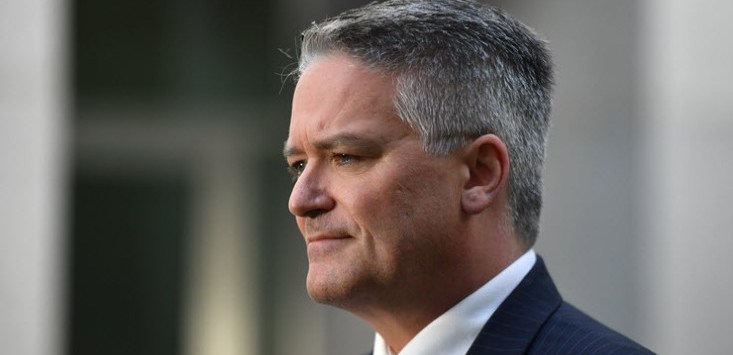
Minister for Finance Mathias Cormann at a press conference at Parliament House in Canberra. Source: AAP Image/Mick Tsikas.
The government has confirmed it will introduce a loss carry-back scheme that will allow businesses to claim back taxes paid on last year’s profits.
The new scheme, announced in tonight’s budget, means a business that was previously profitable, but is making a loss due to the COVID-19 pandemic, can claw back some of the taxes they paid, helping even things out a little.
It serves to acknowledge the particularly tricky business environment brought about by COVID-19, and to support businesses that would likely have been profitable otherwise.
Businesses with a turnover of up to $5 billion will be eligible to offset losses, in order to generate a tax refund.
The scheme will apply to losses incurred up to June 2022, against profits made during or after the 2018-19 financial year.
Eligible businesses will receive a tax refund when they lodge their 2020-21 and 2021-22 tax returns.
The scheme is estimated to benefit about 1 million Australian businesses, employing some 8.8 million workers.
Treasurer Josh Frydenberg also suggested this measure could create 50,000 new jobs.
In his budget speech, Frydenberg acknowledged that the COVID-19 pandemic has turned “fundamentally sound businesses” into loss-making businesses.
“Through no fault of their own, millions of small- and medium-sized businesses have faced lockdowns and restrictions that have severely impacted their ability to trade,” he said.
“Normally, businesses would have to return to profit before they can use these losses.
“But these are not normal times.
“In order to keep their workers, these businesses need our help now.
“They cannot wait years for the tax system to catch up.”
A welcome move
Speaking to SmartCompany earlier this week, when this policy was merely a rumour, Australian small business and family enterprise ombudsman Kate Carnell pointed out this is a policy recommended by the OECD.
Similar schemes are already in place in New Zealand, the US, the UK, Germany, Austria and Japan. And, a loss carry-back scheme was briefly introduced in Australia in 2012, under the Gillard government.
Carnell welcomed the scheme as a way to boost cashflow for those businesses that were previously profitable, and likely will be again.
“It doesn’t help anyone who hasn’t made a profit,” she noted.
“But, a lot of businesses that have really got a future, they’ve been profitable in previous years … they’re businesses that will probably be profitable again.”
When asked whether she would like to see this become a permanent policy, Carnell didn’t go that far.
“It’s an expensive thing to do,” she said.
But, she didn’t necessarily see it as a one-off, either.
In fact, her outlook turned out to be pretty much in line with what the Treasury has announced.
“I think it needs to be in place until the economy is back on track. I don’t think that’s going to happen in 12 months,” she explained.
“It should be in place until the economy is back into growth, and unemployment is down to under 6%.”
NOW READ: Budget 2020: Australia’s tax and superannuation systems get a makeover


COMMENTS
SmartCompany is committed to hosting lively discussions. Help us keep the conversation useful, interesting and welcoming. We aim to publish comments quickly in the interest of promoting robust conversation, but we’re a small team and we deploy filters to protect against legal risk. Occasionally your comment may be held up while it is being reviewed, but we’re working as fast as we can to keep the conversation rolling.
The SmartCompany comment section is members-only content. Please subscribe to leave a comment.
The SmartCompany comment section is members-only content. Please login to leave a comment.